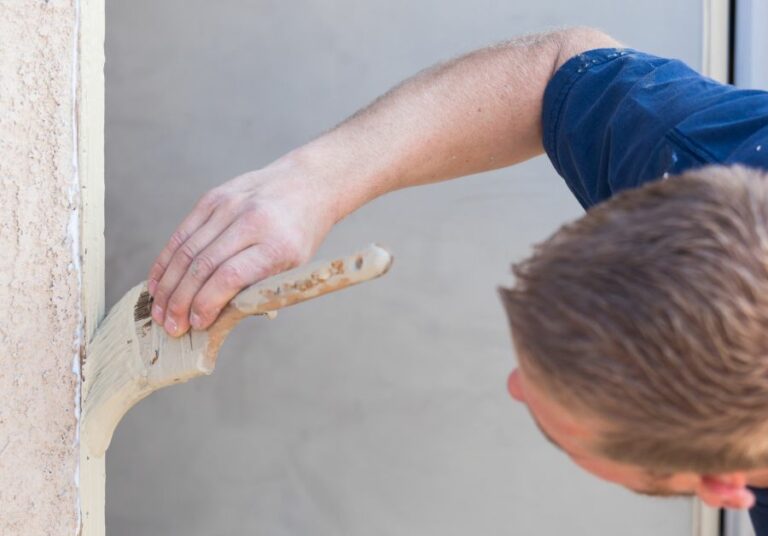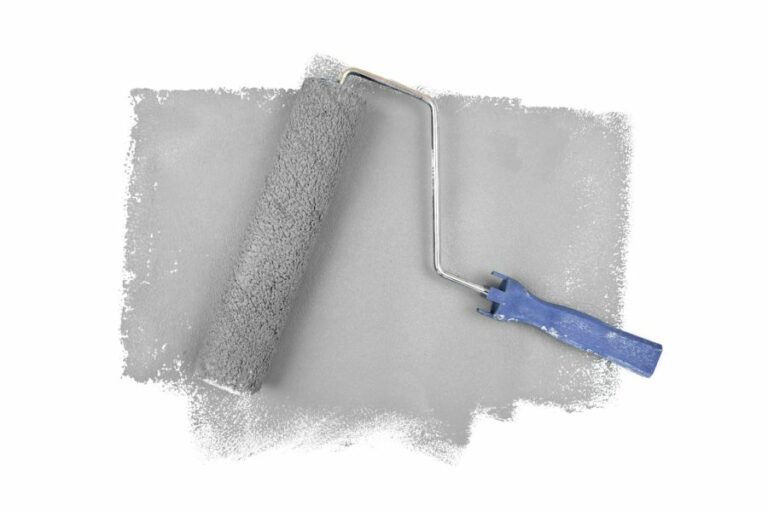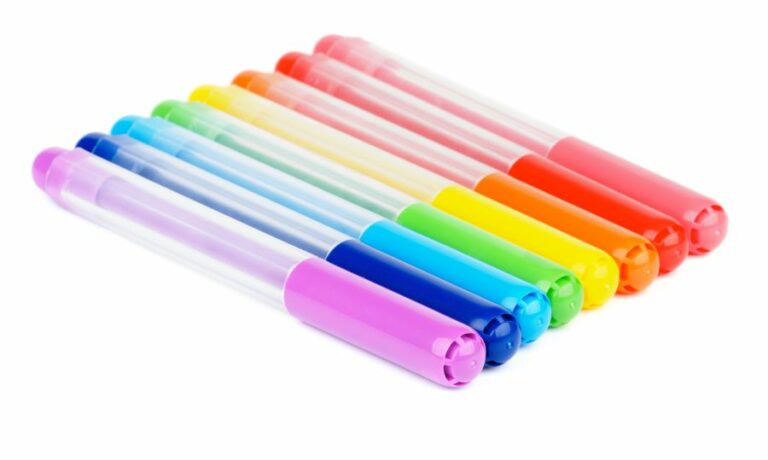Can You Water Down Outdoor Paint, 25 Things You Should Know
Discover the surprising answer to a common DIY dilemma: can you water down outdoor paint? This blog post not only reveals the truth behind this practice but also highlights the factors to consider when attempting it.
Can you water down outdoor paint:
Diluting outdoor paint can improve its adhesion, coverage, and durability in various weather conditions. Latex-based paints benefit from dilution with water, while oil-based paints require the use of specific thinners. However, excessive dilution can compromise the paint’s properties, leading to transparency, poor adherence, and diminished aesthetics. Careful use of dilution techniques helps create vibrant and enduring painted surfaces.

Discover the benefits and drawbacks of watering down outdoor paint, learn the appropriate dilution ratios, and explore alternative options. Enhance your painting venture with essential expert tips for an efficient, smooth, and long-lasting finish. Keep reading for a comprehensive guide.
Contents
- 1 The Intricacies of Diluting Outdoor Paint: Hidden Truths Unveiled
- 2 What is the process for diluting exterior paint?
- 3 Is it Acceptable to Dilute Paint with Water?
- 4 Is it possible to dilute exterior latex paint?
- 5 What is the Durability of Diluted Paint?
- 6 What is the process for diluting exterior paint?
- 7 What is the Maximum Dilution Ratio for Exterior Paint?
The Intricacies of Diluting Outdoor Paint: Hidden Truths Unveiled
Painting outdoor surfaces can be a daunting ordeal, but it’s far from unattainable. A prevalent question that arises with novices, connoisseurs, and distinguished do-it-yourselfers alike is: “Can you water down outdoor paint?“
• The Latex-based Labyrinth: A Closer Look
– When Dilution Holds the Key
Latex-based paints are heralded for their versatility and ease of use. Although manufactured with specific proportions of water, binders, and pigments, there are instances when dilution becomes an essential aspect of their application.
- Arduous Atmosphere: When temperatures plummet or rise to extreme heights, paints struggle to comply with unyielding surfaces. A touch of water may offer the necessary fluidity that facilitates seamless adhesion and optimal coverage.
- Nooks and Crannies: The undesirable occurrence of caked-on paint often mars the allure of meticulously designed outdoor spaces. To circumvent this unsightly issue, diluting paint grants an extra degree of lucidity, ensuring even distribution.
– Dilution Debacles: Warning Signs to Heed
Delving into the art of diluting paint without adhering to specific guidelines may lead to a multitude of mishaps. Here, we unravel the potential pitfalls that may lurk silently behind the practice of diluting outdoor paint.
- Coverage Conundrum: Despite potentially increasing ease of application, excessive dilution may lead to reduced coverage. A watered-down paint has the proclivity to display transparency, necessitating additional layers which extend the process.
- Adhesion Anomalies: Over-diluted paint has the disadvantage of impaired adherence. The tenacious grip a paint possesses is undermined when an abundance of water disrupts the delicate balance between binders and pigments.
- Durability Diminishment: Outdoor spaces are subject to tormenting weather conditions that demand resilience. Diluting paint may compromise its durability, succumbing to elemental wrath in the form of flaking, fading, or peeling.
Unlike the aqueous realm of latex paints, oil-based paints seldom encourage dilution. The complexities of their molecular composition challenge even the most savvy of painters. However, a juxtaposition of thinner to paint serves to alleviate formidable obstacles.
– The Thinner’s Gambit: Strategic Solutions
The introduction of select paint thinners precipitates an amicable affinity between brush and surface. The resultant viscosity fosters a harmonious interaction, invariably enhancing the painted edifice.
- Effortless Emanation: Hindered, oil-based paints can be painstakingly slow affairs when met with unyielding surfaces. A judicious addition of paint thinner empowers the paint, providing ease of application and a finer aesthetic finish.
- Paragon of Persistence: Outdoor edifices subject to merciless climates require enduring paint. Balanced dilution with thinner equips oil-based paint with the tenacity to withstand persistent aggression from the elements.
Just as with their latex counterparts, pursuing the act of diluting oil-based paint with reckless abandon can incite a range of undesirable consequences.
- Tenacious Troubles: Over-thinning the paint diminishes its innate adhesive properties, rendering it incapable of adhering properly to surfaces.
- Aesthetic Afflictions: The haphazard usage of thinner may leave an uneven finish, detracting from the intended visual impact.
• The Final Stroke: Embracing the Art of Dilution
The answer to the riddle of watering down outdoor paint is multifaceted. While latex paints do find solace in dilution under meticulously evaluated circumstances, oil-based paints necessitate a strategic approach with their attendant thinners.
To successfully navigate the perplexing world of paint dilution, mindfulness of the potential risks and a strong grasp of best practices can illuminate the path to a vibrant, enduring masterpiece that withstands the test of time.
Question | Answer |
|---|---|
Can you water down outdoor paint? | Yes, but it’s essential to follow the manufacturer’s recommendations for dilution. Watering down outdoor paint can help in improving its workability and flow, but excessive dilution may cause issues like reduced coverage, lower durability, and compromised adhesion. |
What is the process for diluting exterior paint?
Embarking on the journey of painting your home’s exterior can be quite fascinating yet a tad overwhelming. The central conundrum revolves around achieving a pristine finish without meandering into the realms of excessive paint dilution.
• Discerning the Science: Latex vs. Oil-Based Paints
Before delving into paint dilution techniques, one must understand the rudimentary distinction between latex and oil-based paints, a crucial aspect adeptly impacting the watering down procedure.
– Latex Paints: A Water-Soluble Solution
Commonly employed for exteriors, latex paint is a water-soluble variant that renders dilution with water rather feasible. Akin to the versatility of a chameleon, latex effortlessly adjusts to temperature variations, endowing it with impressive resistance to cracking.
– Oil-Based Paints: The Power of Turpentine
Although less prevalent among exterior painting aficionados, oil-based paints necessitate the use of turpentine for thinning. Possessing a proclivity for long drying spells, this paint inherits an inherent aversion to water.
Ergo, bear in mind the incompatibility of an oil-based paint with dilution techniques that hinge on utilizing water.
• A Steadfast Approach: Diluting Paint in 5 Methodical Steps
Strive for a judicious paint consistency using this quintessential 5-step guide.
1. Fathoming the Fundamentals
First and foremost, read the paint can’s label properly to garner any manufacturer-prescribed directives on dilution. These nuggets of wisdom shall illuminate your path, ensuring adherence to paint-specific recommendations.
2. Procuring Pristine Supplies
Assemble an array of immaculate tools, such as a paint stirrer, measuring cup, and a separate container for the diluted paint. This unerring preparation paves the way for a seamless watering down experience.
3. A Beaker of Bespoke Blend
Initiate the dilution process with a measured approach, adding a modicum of water (typically, half a cup per gallon of paint) to circumvent the perils of excessive thinning. Essentially, aim for a diminutive quantity that stokes curiosity rather than an inundation that drowns ambition.
4. The Confluence of Cohesion and Agility
Vigorously stir the brew with a steely resolve, fostering a state of uniformity that exudes the perfect blend of cohesion and viscosity. This delicate dance of elements warrants a mindful eye, as an exorbitant quantity of water could culminate in an irretrievable catastrophe.
5. The Test of Time: Brushstroke Chronicles
Employ a sacrificial swatch of wood or cardboard to scrutinize the paint’s performance. Observe for telltale signs of opacity, coverage, and texture, gradually amending the dilution ratio until an epitome of brilliance emerges.
• The Cardinal Caveat: Overdilution Conundrums
Tempting as it may seem, excessive dilution could trigger an entanglement of shortcomings, such as a diminished adhesion to surfaces, a patchy semblance of streaky hues, and suboptimal durability. Thus, it is imperative to balance the dilution lest your efforts are rendered futile by unsightly blemishes.
• Taking the Plunge: Embracing a Dynamic Dilution Technique
Equipped with the knowledge of watering down exterior paint, unleash your creative prowess with insurmountable confidence. Engage in a harmonious dance of perplexity, producing a masterpiece that bespeaks the consummate union of artistry, technique, and resilience.
As you embark on this riveting journey, remember the cardinal rule: moderation forms the bedrock of impeccable results.
Step | Description |
|---|---|
1 | Choose the appropriate paint: Make sure to use water-based exterior paint that can be thinned with water. |
2 | Gather materials: You’ll need a clean bucket, a stir stick, and water. |
3 | Calculate the amount of paint needed: Determine how much paint you will need for your project and pour it into the clean bucket. |
4 | Add water: Start by adding a small amount of water, about 5% to 10% of the paint volume, into the bucket. |
5 | Mix thoroughly: Use a stir stick to mix the paint and water together until fully incorporated. The paint should be smooth and slightly thinner in consistency. |
6 | Test: Apply the thinned paint to a small, inconspicuous area of the surface and allow it to dry. Check the coverage and consistency; if needed, adjust the paint-to-water ratio accordingly. |
7 | Paint: Once you’ve achieved the desired consistency, proceed with painting the exterior surface using the thinned paint. |
Is it Acceptable to Dilute Paint with Water?
• Exploring the Foundation: Paint Constituents and Their Roles
To effectively assess the ramifications of watering down paint, one must first delve into the constituents of paint and its functions. Paint composition typically involves three key components: pigments, binders, and solvents. Each serves a unique, indispensable purpose in the realm of painting.
– Pigments: A Canvas of Chromatic Bliss
The foundation of any paint’s visual allure lies in the pigments embedded within it. These granular substances imbue the medium with its picturesque hues, allowing artists and decorators to design a veritable tapestry of colors.
Pigments function primarily by deflecting the visible spectrum’s wavelengths, thus creating a myriad of chromatic combinations.
– Binders: The Architectonics of Adhesion
Binders act as the adhesive force within the paint, facilitating steadfast bonding between pigments and surfaces. Formulated from organic or synthetic polymers, binders merge with the pigment particles during drying, ensuring durability and longevity in the finished work.
– Solvents: Harnessing Fluidity for Finesse
Enter solvents, the unsung heroes governing paint application. These liquids dissolve binders and pigments, producing the desired fluidity and viscosity for even application. As the paint dries, the solvent evaporates, leaving behind a tight-knit amalgam of binder and pigment.
• Plunging into the Dilemma: The Implications of Watering Down Paint
– Acrylic Paints: The Nexus of Thinning and Excellence
For acrylic paints, adding water to achieve a thinner consistency is not only acceptable but also, in some cases, recommended. The inherent water-soluble nature of acrylics permits the smooth admixture of water without compromising the paint’s cohesion.
The thinning ratio preserves the integrity of the acrylic paint, permitting a more uniform, streak-free application with minimal brush marks.
Note: It is advisable to adhere to a 50% water-to-paint ratio for optimal results.
– Oil Paints: A Tenuous Rapprochement with Dilution
The relationship between oil paints and dilution is decidedly more complex. While some artists advocate using solvents such as turpentine or mineral spirits to thin oil paints, others caution against potential opacity loss, diminished vibrancy, and compromised adhesion.
Experimentation and discretion prevail in this context, as the delicate balance between paint constituents teeters precariously under the influence of dilution.
• Conquering the Chimera: Precautions and Techniques for Diluting Paint
– Be Mindful of Solvent Efficacy
It is crucial to appreciate the caliber of the solvent used when diluting paint. For instance, substandard solvents may weaken the binder’s adhesive properties, resulting in a patchy, undesirable finish. Implementing a pure or artist-grade solvent ensures the dilution process is prompt and efficacious.
– Employ Dilution in Conjunction with Layering
Emulating the venerable artistic approach of layering can mollify the potential pitfalls associated with paint dilution. Employing a glazing technique allows for the creation of multifaceted, robust images without sacrificing color saturation or visual impact.
– Applying a Medium: The Diplomacy of Dilution
For those reluctant to plunge headlong into dilution, employing a medium serves as a more tempered approach. Mediums are formulated to augment paint’s workability while maintaining viscosity and adhesion.
This solution offers the advantages of dilution without the associated interrogations of paint integrity.
To conclude, watering down paint can be an art in itself, requiring knowledge, prudence, and technique to master successfully. By recognizing the nuances of paint composition and manipulation, one can harness the power of dilution to create mesmerizing, enduring works.
Is it possible to dilute exterior latex paint?
Diluting exterior latex paint can be a complicated task posing myriad challenges.
• Comprehending Latex Paint: A Primer
Before addressing the query of dilution, we must first grasp the essence of latex paint. Latex paints, typically heralded as water-based formulations, comprise a polymeric substance as the fundamental binder.
This component amalgamates with an array of pigments, additives, and solvents to create a veritable symphony of hues and finishes.
– The Binder: A Thaumaturgic Element
The binder, a critical constituent in paint, performs the cardinal function of melding the pigments and ensuring steadfast adhesion.
Polyvinyl acetate and acrylic resins are the crux of latex binders, contributing to their flexibility and durability, thereby rendering them impervious to agents of decay, such as ultraviolet radiation and precipitation.
– The Pigment: Alchemists of Color
Responsible for conferring color and opacity, pigments are microscopic particles that meld with the binder during the drying process. They can be organic, inorganic, or a tantalizing concoction of both, bestowing a kaleidoscope of shades for impassioned artists and home improvers alike.
– The Additives: Conjurers of Sundry Marvels
Additives are the silent sculptors of latex paint, influencing properties like consistency, flow, drying time, and resistance to microbes. They form an indispensable part of the painter’s palette, honing the final visage of the applied paint.
– The Solvent: A Mercurial Companion
Water serves as the preeminent solvent in latex paint, aiding in melding the components and facilitating their transportation to the surface. Once the paint is applied, the solvent evaporates, leaving behind the resplendent gamut of solid matter.
• The Conundrum: Is Dilution a Prudent Endeavor?
Now that we have unraveled the constituents of latex paint, we can address the subject of dilution with the erudition it warrants. In short, the answer is a paradoxical yes and no.
While dilution may be warranted in certain circumstances, indeliberate and haphazard dilution could create a maelstrom of setbacks. Thus, a strategic approach is indispensable.
– Pro: Enhanced Workability & Application
Dilution can render latex paint more facile to work with, refining its application by brush, roller, or sprayer. Under specific circumstances, such as high temperatures or low humidity, a modicum of water might prevent the paint from drying too swiftly, ensuring a smooth, seamless finish.
– Con: Compromised Opacity, Cohesion & Durability
Excessive dilution can besmirch the resplendent realm of latex paint, leading to compromised color intensity, cohesion, and durability.
By altering the intrinsic balance of pigments, binders, additives, and solvents, dilution can trigger a litany of issues, from sagging and reduced opacity to diminished adhesion and longevity.
• Treading the Tightrope: Dilution Done Aptly
If you reckon that dilution is warranted, exercise caution and adhere to the following guidelines to ensure that your exotic voyage into the realm of watered-down latex paint is triumphant:
- Consult the Manufacturer’s Instructions: Abide by the specifications provided by the paint manufacturer to avoid mishaps. Some manufacturers may designate a permissible dilution range or provide specific dilution instructions for optimal results.
- Measure Accurately, Mix Gradually: Dilute with diminutive amounts of water, no more than a pint per gallon, and mix it in slowly, methodically assessing the paint’s consistency.
- Self-Restraint is Key: Harness your inner da Vinci and remember that less is more in the context of paint dilution. Excessive water can wreak havoc on your painting endeavor, resulting in an unwanted revamp of your creation down the line.
In conclusion, while it is indeed possible to water down exterior latex paint, it is imperative to approach dilution with caution, nuance, and technical acumen. Failure to do so might see your artistic endeavors smothered by the inadvertent consequences of injudicious dilution.
| Can you water down the exterior latex paint? | |
|---|---|
| Yes | You can water down exterior latex paint to a certain extent, usually by adding no more than cup of water per gallon of paint. This can help improve the paint’s flow and workability, but over-thinning can reduce the paint’s durability and protective properties. |
What is the Durability of Diluted Paint?
Diluting paint is a technique often utilized to control viscosity, alter its hue, or extend its life, albeit with consequences. In this exploration, we shall investigate the longevity of watered-down paint and expound on the related factors affecting its endurance.
• The Lifespan of Diluted Paint: Decoding the Variables
To truly comprehend the durability of paint with added water, we must examine the multifarious components on which it depends, each impacting the finished product.
– Constituents: Latex Versus Oil
Paints are generally segregated into two broad categories: water-based (latex) and oil-based (alkyd). Their composition dictates their performance upon dilution.
Latex Paint: A Quandary of Cohesion
Latex paint utilizes microscopic, hydrophobic acrylic particles that coalesce upon evaporating water. Introducing additional H2O undermines their cohesion and prolongs the desiccation process. Thus, over-diluted latex paint may not manifest the adhesion, uniformity, and robustness imperative to its longevity.
Oil Paint: Thwarting the Natural Order
Oil-based paint relies on a linseed oil solvent, which oxidizes when exposed to air, thus forming a durable film. Again, over-dilution jeopardizes these reactions, debasing the paint’s steadfastness and ability to withstand the test of time.
– Environmental Variables: A Balancing Act
Surrounding atmosphere exerts a strong influence over the lifespan of a watered-down paint job. Both humidity and temperature regulate the speed and quality of the drying process.
Humidity: Friend or Foe?
Moderate humidity levels expedite water evaporation and, consequently, the drying time of the paint. However, excessive moisture in the air hampers solvent evaporation and creates a protracted, uneven dry, ultimately affecting paint resilience.
Temperature: Finding the Sweet Spot
Excessively high or low temperatures can wreak havoc on paint drying. Conventionally, the optimal temperature range for paint application is 50F to 90F (10C to 32C). Deviations from this range can result in compromised longevity and appearance.
– Surface and Application: Foundations for Endurance
The surface to which you apply the paint, along with the method employed, also wields a potent influence on the longevity of diluted paint.
Primed for Success: The Role of Substrates
An immaculate, well-prepped surface provides an ideal foundation for paint adherence. Contaminants or improper priming may hinder adhesion, allowing the diluted paint molecules to falter sooner.
Skillful Application: The Art of Technique
Distinctive to the dilution ratios, different tools, and techniques are required for a flawless finish. Expertly applying thin coats, abstaining from layering paint, and utilizing the appropriate brushes or rollers contribute to a long-lasting, dazzling result.
• An Astute Dilution: A Path to Prolonged Paint Life
Watered-down paint will indeed have a shortened lifespan vis–vis its undiluted counterpart, but the degradation rate hinges on a myriad of factors. Heedfulness in dilution ratios typically 5-15% water for latex paint and up to 10% for oil-based paint.
Careful consideration of environmental variables, surface preparation, and application techniques can ensure a protracted and satisfactory existence.
In summation, it is nigh impossible to pin down an exact timeframe for the longevity of watered-down paint, as it is contingent upon a cornucopia of factors.
However, with scrupulous attention to detail and an understanding of the contributing elements, one can create a paint job of remarkable endurance and splendor.
Type of Paint | Shelf-Life | Factors affecting shelf-life |
|---|---|---|
Water-based paint (latex or acrylic) | 2 to 5 years | Storage conditions, exposure to air, quality of paint |
Oil-based paint | Up to 15 years | Storage conditions, exposure to air, quality of paint |
Watered-down paint | 1 to 2 years (possibly less) | Ratio of water to paint, storage conditions, exposure to air, quality of paint |
What is the process for diluting exterior paint?
• Understanding Paint Consistency
To achieve a flawless finish when painting your home’s exterior, it is essential to comprehend the significance of paint consistency. Optimal viscosity is paramount for smooth application, even coverage, and a seamless look that can endure the test of time.
• Assessing Paint Viscosity
Prior to diluting your paint, assess its thickness by stirring it well and observing its behavior. If the paint drips slowly from the stirrer or drags on the surface when applied, it may be too viscous and require thinning.
– The Role of Paint Thinner
Although water can be employed to dilute water-based paints, paint thinners are specifically designed to alter the consistency of solvent-based paints.
Select an appropriate thinner based on the type of paint you are using, acrylic, oil, or latex, and adhere to the manufacturer’s recommendations for maximum dilution ratios.
• Step-by-Step Guide to Diluting Exterior Paint
1. Preparing the Workspace
To bypass inadvertent spills and accidents, ensure that your workspace is well-ventilated and free from hazards. Wear protective gloves, goggles, and a mask, and have a bucket of water on hand for immediate cleanups if necessary.
2. Measuring the Paint and Thinner
Using a measuring cup, pour a predetermined amount of paint into a separate container. Calculate the appropriate quantity of thinner based on the paint manufacturer’s guidelines. Typically, the ratio is between 10% to 20% thinner, but it can fluctuate depending on the paint type.
3. Combining and Stirring
Gradually introduce the thinner into the container with the paint, stirring continuously. Mix the solution until the paint and thinner have amalgamated into a homogeneous mixture. Observe the paint’s viscosity as it amalgamates; the optimal consistency should resemble that of whole milk.
4. Testing the Mixture
Dip a paintbrush or roller into the diluted paint and apply it to a piece of spare wood or cardboard. Examine the coverage and texture of the paint, ensuring that it adheres suitably to the surface. This step is paramount to gauge whether the dilution ratio is satisfactory.
5. Adjusting the Dilution Proportions
If the paint still appears too thick, incrementally add more thinner and blend it thoroughly. Conversely, if the paint is excessively thin and drips or runs down the surface, add more paint and blend it until the desired viscosity is attained.
• Key Considerations for Diluting Exterior Paint
– Climate and Weather
Environmental factors play a pivotal role in the paint application process. In arid, warm climates, paint tends to dry rapidly; a slightly thinner consistency will facilitate an even spread. Alternatively, painting during humid or rainy periods necessitates a thicker paint consistency to mitigate dilution by moisture.
– Surface Absorption
The texture and porosity of the surface to be painted govern paint absorption. Rough surfaces, such as brickwork, may demand a thinner paint that can permeate the crevices, while smoother surfaces will benefit from a more viscous paint for optimal coverage.
– Appropriate Application Tools
The tools chosen to apply the paint will affect the required paint consistency. Rollers can accommodate thicker paint applications, with the added advantage of delivering unblemished coverage. Sprayers may necessitate further thinning of the paint for seamless propulsion through the spray nozzle.
In conclusion, mastering the dilution of exterior paint fundamentally relies on an understanding of paint consistency, viscosity, and the factors influencing their optimization.
Diluting paint correctly will contribute to a sublime finish and ensure that your home’s exterior paint job remains a model of endurance and aesthetic appeal.
Step | Instructions |
|---|---|
1 | Gather materials like exterior paint, water or paint thinner, a paint stirrer, and a bucket. |
2 | Mix the paint thoroughly by stirring it with the paint stirrer. |
3 | For water-based paints, use clean water to dilute the paint. For oil-based paints, use paint thinner or mineral spirits. |
4 | Slowly add the water or paint thinner to the paint, stirring constantly. Be careful not to add too much at once. |
5 | As you add the water or paint thinner, the paint will start to thin out. Continue adding the diluting agent until the paint reaches the desired consistency. Typically, diluting around 10% should suffice. |
6 | Once you reach the desired consistency, test the paint on a small area of the surface to ensure it spreads and covers evenly. |
7 | If the paint is still too thick or difficult to spread, add more of the diluting agent, stir well and test again. |
8 | When the paint is properly diluted and tested, it is ready for application. |
What is the Maximum Dilution Ratio for Exterior Paint?
• The Intricacies of Paint Dilution: Balancing Consistency and Coverage
Diluting exterior paint is often necessitated due to the manifold variegations in pigment concentration, viscosity, and substantiality. Achieving the ideal equilibrium is crucial to ensuring optimal coverage and durability.
– A Symphony of Factors: Contemplating Weather, Surface, and Drying Time
When contemplating paint dilution, it is of utmost importance to be cognizant of salient environmental factors; these include weather conditions, surface intricacies, and pertinent drying time.
Meteorological Marvels: The Elemental Dance
Rain or excessive humidity can significantly hamper your exterior painting endeavor. Ensuring that the climate is amenable beforehand is vital to achieving a resplendent and long-lasting finish.
Surfaces: The Canvas of Your Architectural Mural
Different surfaces necessitate distinct paint formulations and dilution ratios. Porous materials such as brick or stucco may require additional dilution for deeper penetration, whereas nonporous surfaces may benefit from a higher concentration.
Drying Duration: A Race Against Time
An often-overlooked factor in paint dilution is drying time. Under-diluted paint can result in extended drying periods, whereas overly diluted paint can compromise quality and longevity.
While dilution ratios vary, considering the manufacturer’s recommendations and the specific paint type is essential. Additionally, experimentation and testing on discrete, unobtrusive areas can provide invaluable insight.
– Water-Based Wonders: Acrylic and Latex Paint Formulations
- Acrylic Paint: Often heralded for its quick-drying prowess and resiliency, acrylic paint can typically be diluted at a 5% to 10% ratio. Excessive dilution may result in decreased opacity and abradability resistance.
- Latex Paint: Comprised of an amalgam of polymers and pigments, latex paint’s dilution ratio can range from 5% to 20%, contingent upon the desired consistency and coverage.
– Oil-Infused Offerings: The Alkyd Alternative
The dilution of alkyd-based oil paints is a rather delicate process. Exceeding a 10% dilution ratio may have deleterious effects on the paint’s drying time and durability. Turpentine or mineral spirits can serve as a suitable diluent for these tenacious renderings.
• Dilution Dexterity: Employing the Stirring Artistry
Dilution demands a deft hand, incorporating measured quantities of diluent and paint in a harmonious serenade of stirring prowess.
– Step 1: Original Overture – Preparing the Paint
Pour the undiluted paint into an ample container, taking care to reserve space for the diluent you will soon combine.
– Step 2: Diluent Deluge – Adding the Diluent
Dispense the desired ratio of diluent into the paint, exercising caution to preclude an undue dilution debacle. Aim, initially, for a more conservative dilution, proceeding thereafter from a position of strength.
– Step 3: Symphonic Stirring – Combining Paint and Diluent
Employ a mixing instrument, such as a stirrer or paddle, to merge the diluent and paint. Employ elongated, rhythmic strokes, progressing from languid revolutions to a more vigorous tempo as the two substances coalesce into an exquisite painting panacea.
– Step 4: Visual Veracity – Testing the Diluted Paint
Before embarking on your exterior painting journey, we encourage you to test your newly-diluted creation in an inconspicuous region. This will yield invaluable insights and rectification opportunities, should they be required.
• The Paragon of Paint Dilution: Conclusion
In the realm of paint dilution, achieving the zenith of quality, coverage, and durability requires a symphony of factors, considerations, and dexterous techniques.
By understanding the intricacies of paint formulations, assessing environmental factors, and honing dilution methodology, you will elevate your exterior painting endeavors to an artistic masterpiece.
Paint Type | Recommended Dilution | Maximum Dilution |
|---|---|---|
Water-based (Latex) Paint | 5% | 10% |
Oil-based Paint | 5% | 10% |
Acrylic Paint | 5% | 10% |







